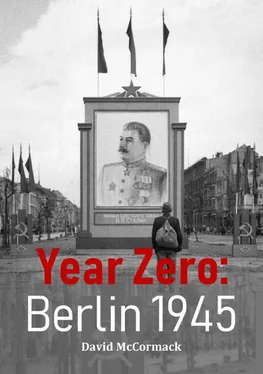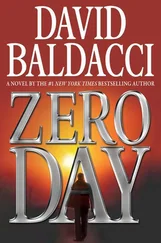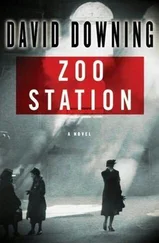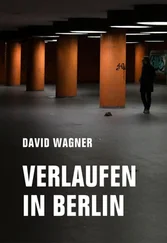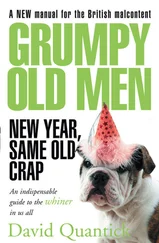Over the next few hours, Hitler came around to the view that it was time to bring things to an end. As renowned Hitler scholar Joachim Fest noted, ‘Once he had made up his mind after long vacillation, he made his decisions rapidly and without hesitation’. To this end, he set about dictating his personal and political testaments. Significantly, he also chose this time to marry his long-term partner, Eva Braun. As leader of the Reich, he could not allow himself close personal ties to anyone. Now that time was coming to an end, it simply didn’t matter any more. Walter Wagner, a local government official was brought to the bunker to carry out the ceremony, which because of the circumstances would be a simple ‘War Wedding’. Dr Naumann acted as registrar, and Bormann and Goebbels were the witnesses. The simple ceremony conducted in the early hours of 29 April proceeded as follows:
Wagner: I come herewith to the solemn act of matrimony. In the presence of the above-mentioned witnesses… I ask you, my leader Adolf Hitler, whether you are willing to enter into matrimony with Miss Eva Braun. If such is the case, I ask you to reply yes.
Hitler: Yes.
Wagner: Herewith I ask you, Miss Eva Braun, whether you are willing to enter into matrimony with my leader Adolf Hitler. If such is the case, I ask you to reply yes.
Braun: Yes.
Wagner: Now, since both these engaged persons have stated their willingness to enter into matrimony, I herewith declare the marriage valid before the law.
The marriage was more than an act of gratitude towards one of the few who had remained loyal to the end, it was in essence Hitler’s abdication from his role as a world historical figure. Nurse Erna Flegel who was caring for the sick and wounded in the Chancellery later recalled her impressions of the wedding. Readers should note that her date of the ceremony (28 April) is incorrect. This mistake is understandable given the conditions in the bunker at the time. Flegel’s account is taken from an interrogation by the U.S. Strategic Services Unit on 30 November 1945:
The marriage of Hitler to Eva Braun took place on 28 April… It was immediately clear to me that this signified the end of the Third Reich, for if Hitler had believed a continuation of it possible, he would never have taken this step. Now, with death facing him, he wished to thank this woman for her self-sacrificing loyalty by giving her his name. After all, she was still young and had voluntarily stayed with him in order to share his fate… The incident was of little importance to us; at any rate, we saw nothing unusual in it, for Eva was a completely colourless personality. When she was with a crowd of stenographers, she was in no way conspicuous among them. For example, the fact that Hitler had poisoned his wolfhound somehow affected us more. The dog received in Hitler’s presence a large dose of the poison with which later others were poisoned. He was very fond of that dog, and took its death very much to heart.
Nurse Flegel was absolutely correct in that Hitler’s marriage symbolised the final act in the terrible saga of the Third Reich. Hitler’s marriage to Eva Braun marked his divorce from the German people, a people whom he believed had failed him. As such, he now welcomed his coming death as a merciful release.
At 07.00hrs on the morning of 29 April, a powerful Soviet artillery and mortar barrage was unleashed against the buildings shielding the Reichstag. The two main buildings, the Kroll Opera House and the Ministry of the Interior came under intense fire which succeeded in suppressing at least part of the German defences. Meanwhile, the 756 thRifle Regiment of the 150 thRifle Division prepared to cross the Moltke Bridge. Some troops managed to smash their way through the barricades, but a crossing in force could not be effected until German resistance in the Ministry of the Interior had been totally eliminated. Throughout the night of 29/30 April, units of the Soviet 150 thRifle Division’s 756 thand 674 thRifle Regiments and the 171 stRifle Division’s 380 thRifle Regiment carried out the grim task of clearing the Ministry of the Interior of its determined defenders. By 04:00hrs on 30 April, the building was finally captured and troops consolidated their positions on the lower floor which looked across the Konigsplatz towards the Reichstag. Meanwhile, fighting continued in other parts of the city as 1 stBelorussian Front’s right-flank formations secured the western approaches to the city.
As the Soviet forces closed in on the Reichstag on 29 April, Hitler sent for General Mohnke in order to clarify what exactly was happening. Mohnke reported to those present at the midday situation conference. The latest news from the front lines was catastrophic. With the aid of a map, Mohnke outlined the situation:
In the north the Russians have moved close to Weidendammer Bridge. In the East they are at the Lustgarten. In the south, at Potsdamer Platz and the Aviation Ministry. In the west they are in the Tiergarten, somewhere between 170 and 250 feet from the Reich Chancellery.
When Hitler asked, ‘How long can you hold out?’. The answer given by Mohnke was unequivocal, ‘At most twenty to twenty-four hours my Fuhrer, no longer’. With this shattering news Hitler prepared his final withdrawal from the world stage. He first gave orders for his dog Blondi to be poisoned. Whilst he could not bear the thought of his beloved German Shepherd falling into Russian hands, the killing of Blondi would also provide an opportunity to test the cyanide capsules left by Himmler.
That evening news filtered through into the bunker via radio that Mussolini and his mistress Clara Petacci had been executed. This news awakened fears in Hitler that if captured by the Russians (dead or alive), he would be taken to Moscow for the amusement of Jews and Communists. Shortly afterwards Hitler spoke with the overseer of the bunker garages Obersturmbannfuhrer (Unit Leader) Erich Kempka:
Hitler: How are things with you, Kempka? How are your men?
Kempka: Their morale is good and they’re waiting for relief from Wenck.
Hitler: Yes… We’re all waiting for Wenck. Good bye, Kempka, and take care of yourself.
At the evening situation conference Weidling again suggested a breakout with the remaining troops. Hitler replied rather confusingly that whilst he would permit the breakout of small groups, capitulation was still anathema to him. Somewhat nonplussed by Hitler’s reply, Weidling later arranged to meet his commanders the following morning at his Bendlerblock HQ.
That night Hitler bade farewell to his remaining entourage, telling them that he did not want either his living body or mortal remains falling into Russian hands. At some time between 01.00hrs and 03.00hrs, Hitler received confirmation that all efforts to relieve Berlin had failed. It was now 30 April and the Soviet assault on the Reichstag and central government district had began in earnest. The first direct assault on the building was a failure as attacking troops came under a murderous crossfire from German defenders holed-up in the Kroll Opera House. The Soviet Army General Staff report compiled after the battle went into some detail with regard to the storming of the Reichstag:
The German’s powerful strong-point – the Kroll Opera House – interfered with the unfolding of the subsequent attack on the Reichstag. The Germans had configured the opera house for all-round defence. Barricades had been erected in the lanes and avenues north and east of the Kroll Opera House. On the building’s roof, as well as on the second floor, the enemy had set up guns that fired on the windows of ‘Himmler’s House’ which we had captured. The enemy could also sweep from the Kroll Opera House the southern face of ‘Himmler’s House’ and the Konigsplatz.
Moreover, it was from this building that the Germans were able to keep under fire the Moltke Bridge and the quays north and south of it, which made the crossing of the 79 thRifle Corps tanks and artillery over the Spree River’s southern bank more difficult. We only managed to cross a few self-propelled guns and 122mm and 153mm guns along the bridge during the night of 29/30 April and concentrate in the courtyard of ‘Himmler’s House’…
Читать дальше
